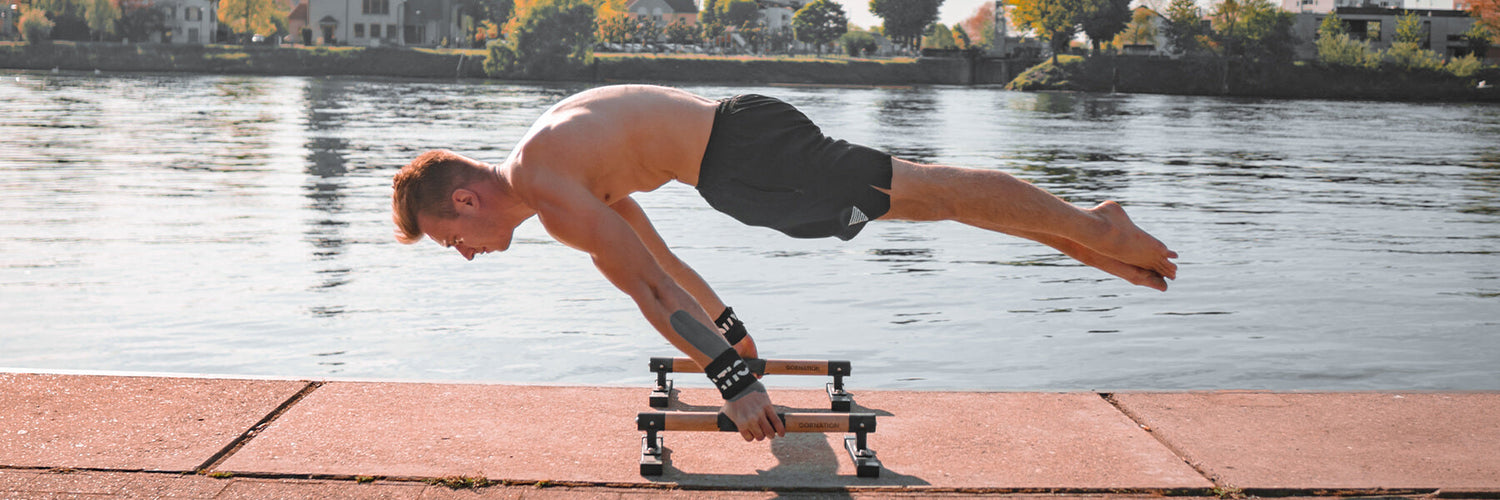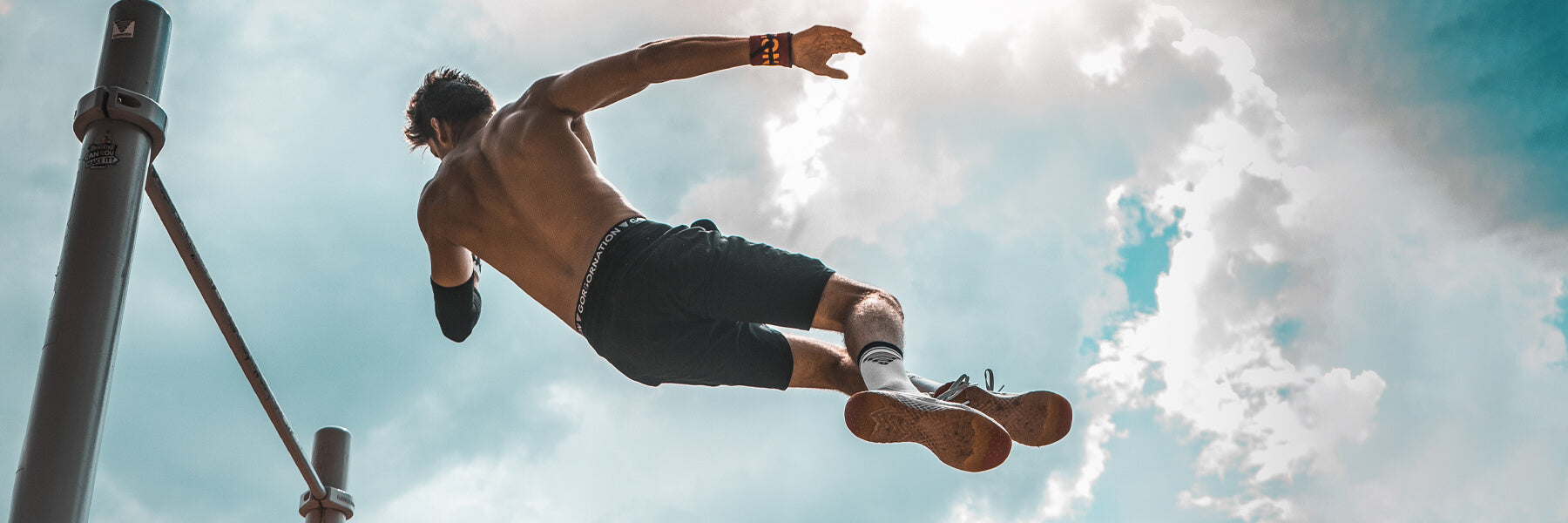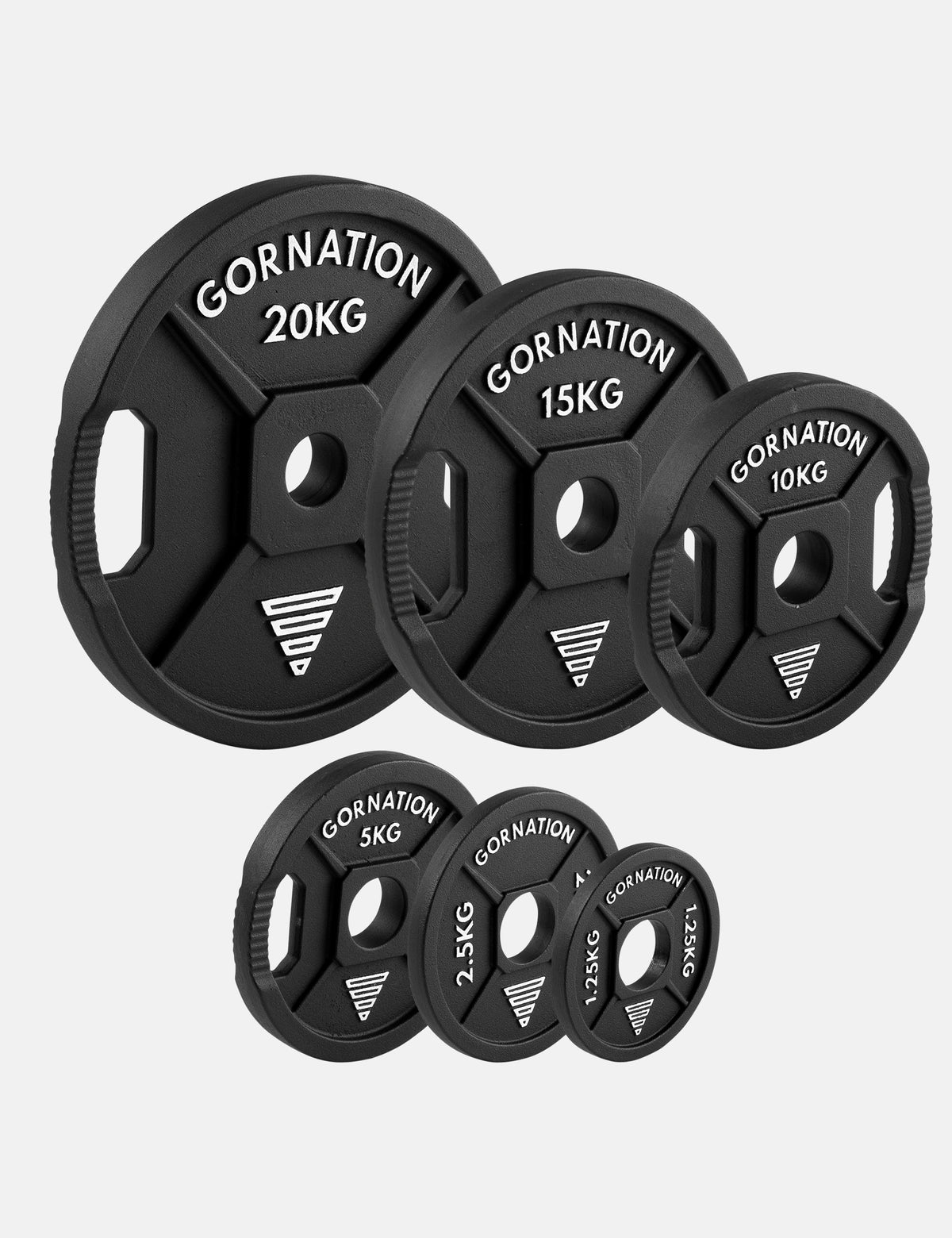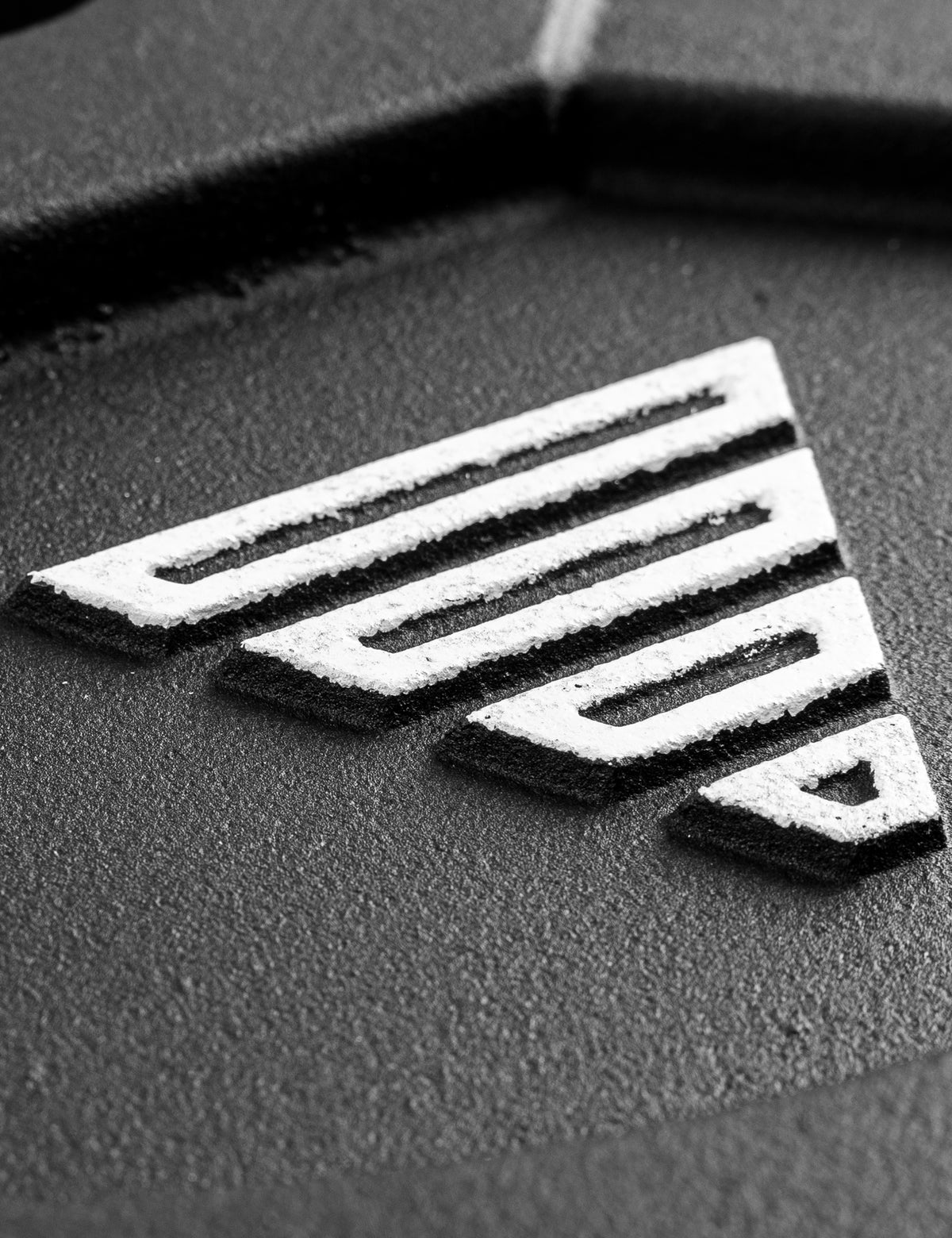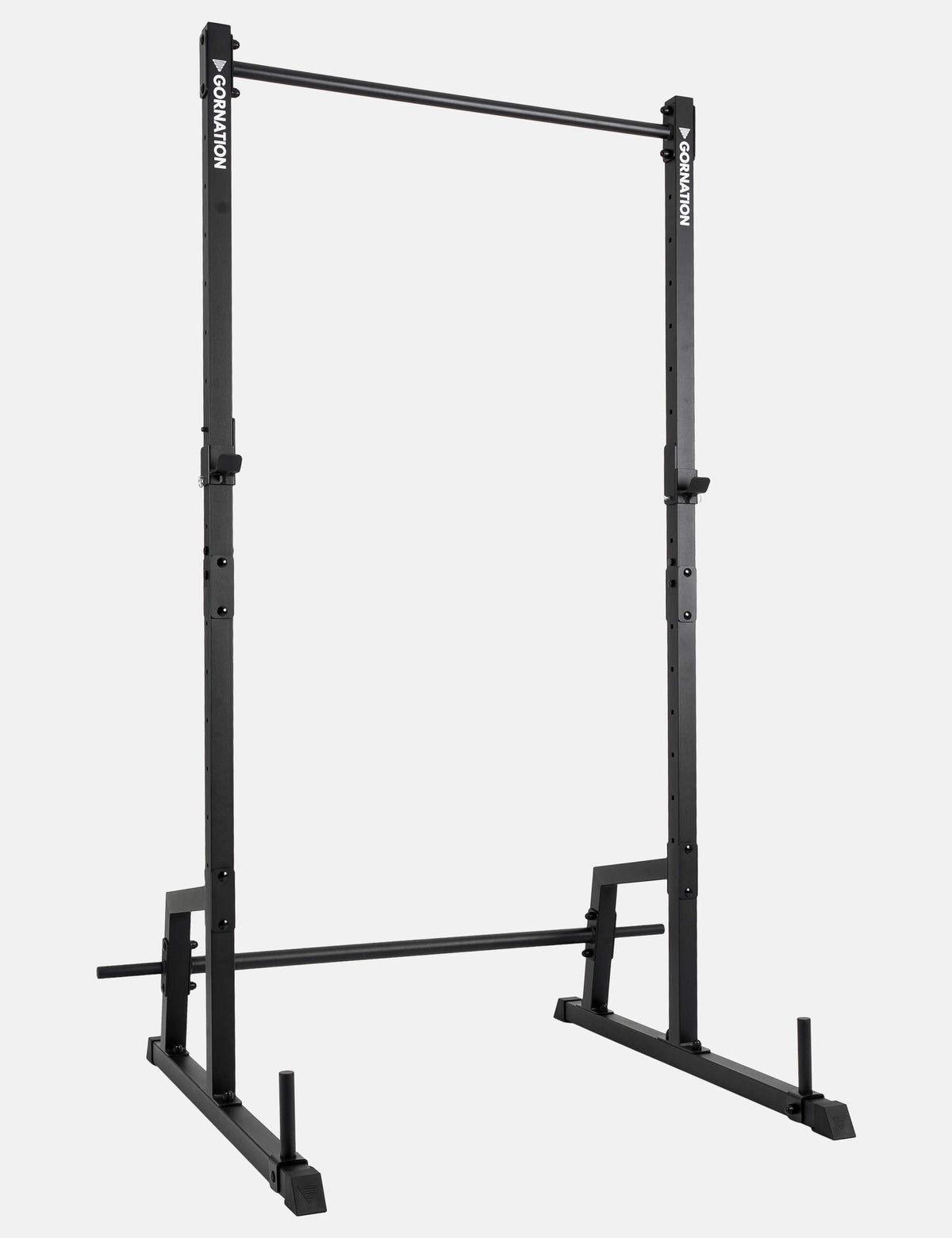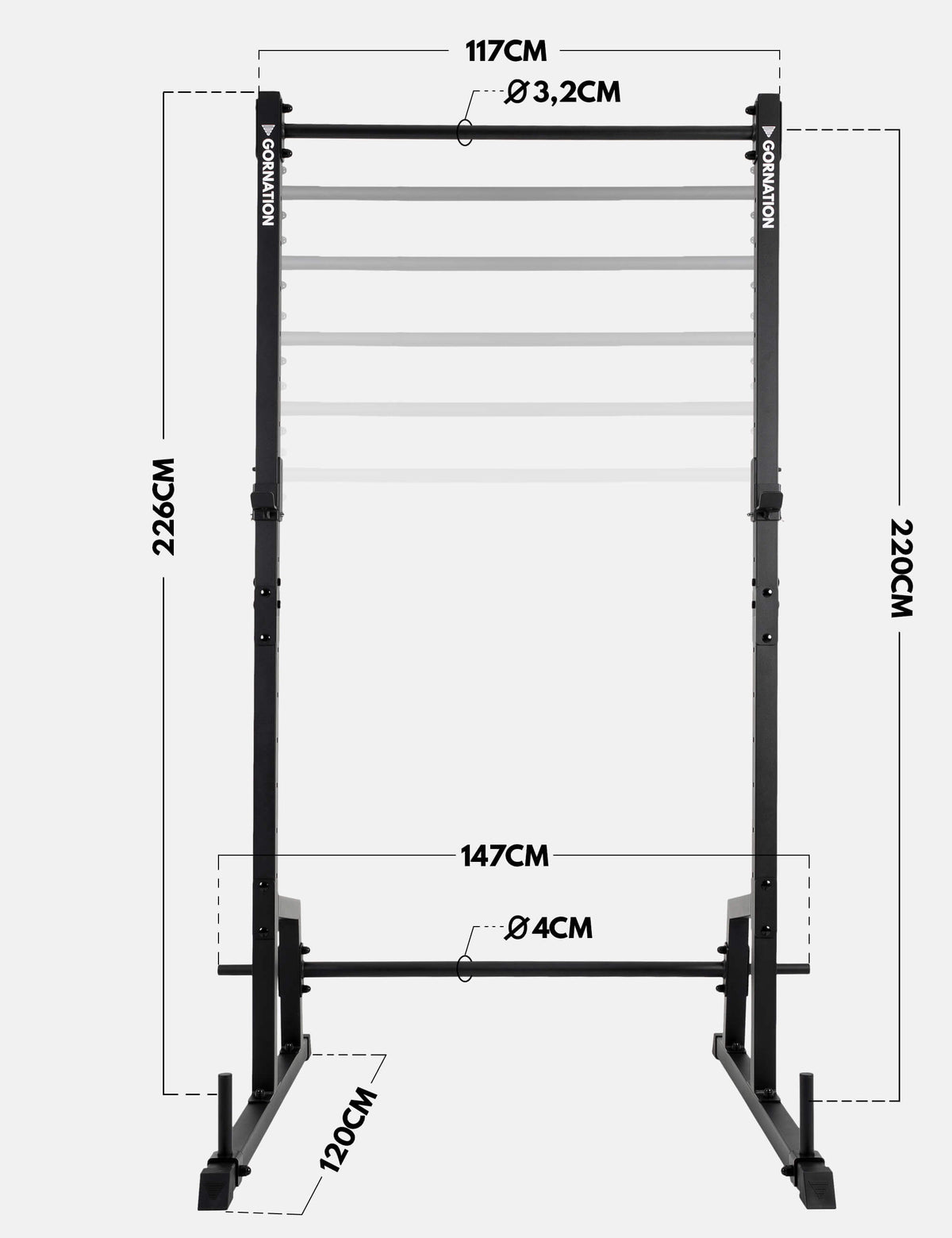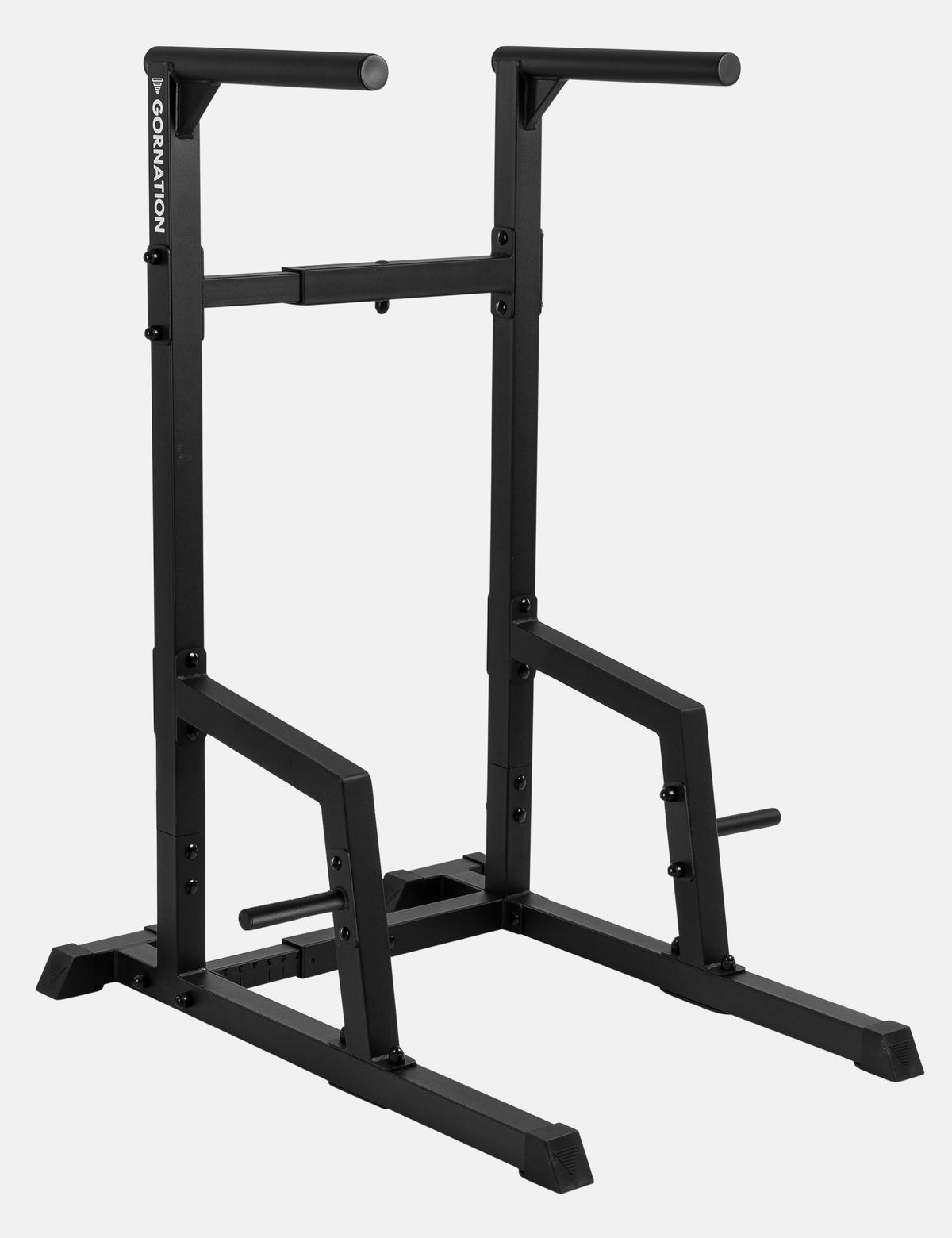4 Reasons why you should train Statics
Statics are "strength moves" where you put your body in a certain position and hold it. Very well known statics are human flag, planche, front lever or back lever. A high degree of maximum strength and body tension is required to hold the body in such positions. A "statics-athlete" usually also belongs to the freestyle calisthenics scene, but he concentrates only on the strength aspect and does not use any dynamics in his combinations. So-called strength dynamics are the exception here, as they mainly require strength to be performed. Well known strength dynamics are planche push ups, handstand push ups or hefesto.
Strength dynamics are therefore often counted as statics, because a "statics-athlete" focuses on all possible "strength moves", where the strength dynamics belong to.
Even if you focus on the statics, it is important not to neglect the basics. Since a lot of maximum strength is being used, your joints, tendons and muscles will be under a lot of stress, which can lead to problems. Continue to build training days with basics into your workouts to keep your body healthy and provide variety in your workouts.
Recovery also plays a very important role. You will feel less progress over time if your body is pushed too hard. Give it a break and work on your mobility and recovery as well.
If you are interested in pure strength and are not a fan of momentum and dynamic rotation, statics are perfect for you.

Let's get to 4 reasons why you should start with statics.
1. Reason: You can train everywhere
You are not bound to a calisthenics park or bar, because you can train statics anywhere. Calisthenics is generally possible everywhere, but for Freestyle you need a suitable bar and for Weighted you need the necessary additional weight. Whether at home or outside at the lake, a Statics session is always possible.
2. Reason: Freestyle Calisthenics does not require Dynamics.
You can also participate in freestyle competitions or consider yourself a freestyle athlete if you don't find Dynamics appealing. Many Statics athletes are at least as successful as an all-rounder in freestyle. You can focus on Strength skills and score points without being distracted by Dynamics. Here you can find an example of a freestyle competition in which Nikolaj Mitrofanov achieved 3rd place without Dynamics:
3. Reason: Lower risk of injury
Statics in combination with proper warm-up and regeneration have a lower risk of injury, because often no fast or unfamiliar movements are performed. Dynamics, for example, have a higher risk of injury because the dynamic turns are riskier and are not always performed successfully.
4. Reason: Combine Statics with other disciplines
Statics work great in combination with weighted calisthenics because the maximum strength gained is transferred to other exercises. Many calisthenics athletes who have a strong planche also notice the increase in strength when doing dips with added weight. However, this is often not the case the other way around. Dips can give you more strength for the planche, but technique also plays a big role. In our interview with "Denton Conteh" we go into more detail on these topics. He also manages to achieve a high level of statics while performing deadlifts at 240Kilos.
Improve your progress with the right equipment
1. Parallettes
Parallettes are essential for any statics athlete. Many exercises can also be performed on the floor, but parallettes offer many more possibilities. Especially in the beginning, it is easier to learn statics on the parallettes because you have more distance to the floor. The increased distance makes it easier to perform skills like the l-sit, even if your legs aren't completely straight yet. Check out our blog article about parallettes for 13 exercises you can incorporate into your workout.
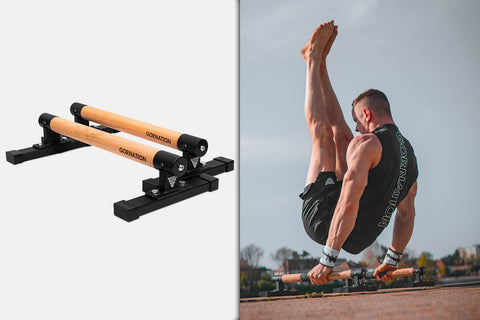
2. Workout Rings
Athletes are becoming more and more attracted to workout rings because of the countless training possibilities they bring. On parallettes, pull exercises are only possible to a very limited extent. The workout rings offer this possibility, and you can optimally work on your front lever or muscle up, without the need for a pull-up bar. We also have a blog with 14 different exercises for your workout.

3. Liquid Chalk
Grip plays a very important role in training. Sweaty hands can make you lack balance in handstands or make the hefesto seem impossible. Liquid Chalk dries quickly on your hands, and you can go through your training with the ultimate grip. After training, you can easily wash it off with water.

4. Wrist Wraps
Especially during statics, your wrists feel a high load, which can lead to pain. Wrist wraps keep your wrists warm and provide more stability during your performance. Your freedom of movement is not restricted.

5. Elbow Sleeves
Elbow sleeves have the same effect as wrist wraps. Your elbows are better stabilized and kept warm. The risk of injury is minimized, and you benefit from a safe workout. Especially the elbow/biceps area is very stressed during exercises like planche or hefesto. The use of elbow sleeves is very effective to counteract overtraining in this case.

6. Resistance Bands
Especially in the beginning, it seems impossible to hold a front lever or back lever. Resistance bands bring you one step closer to your goal and give you a feel for the movement and position. Along the way, you build strength and can track your progress very well thanks to the different resistance bands. You can read more about exercises and benefits of resistance bands in our blog article.

 | 5.000+ Reviews
| 5.000+ Reviews
 Free EU Shipping above 100€*
Free EU Shipping above 100€*
 300.000+ Customers Worldwide
300.000+ Customers Worldwide

